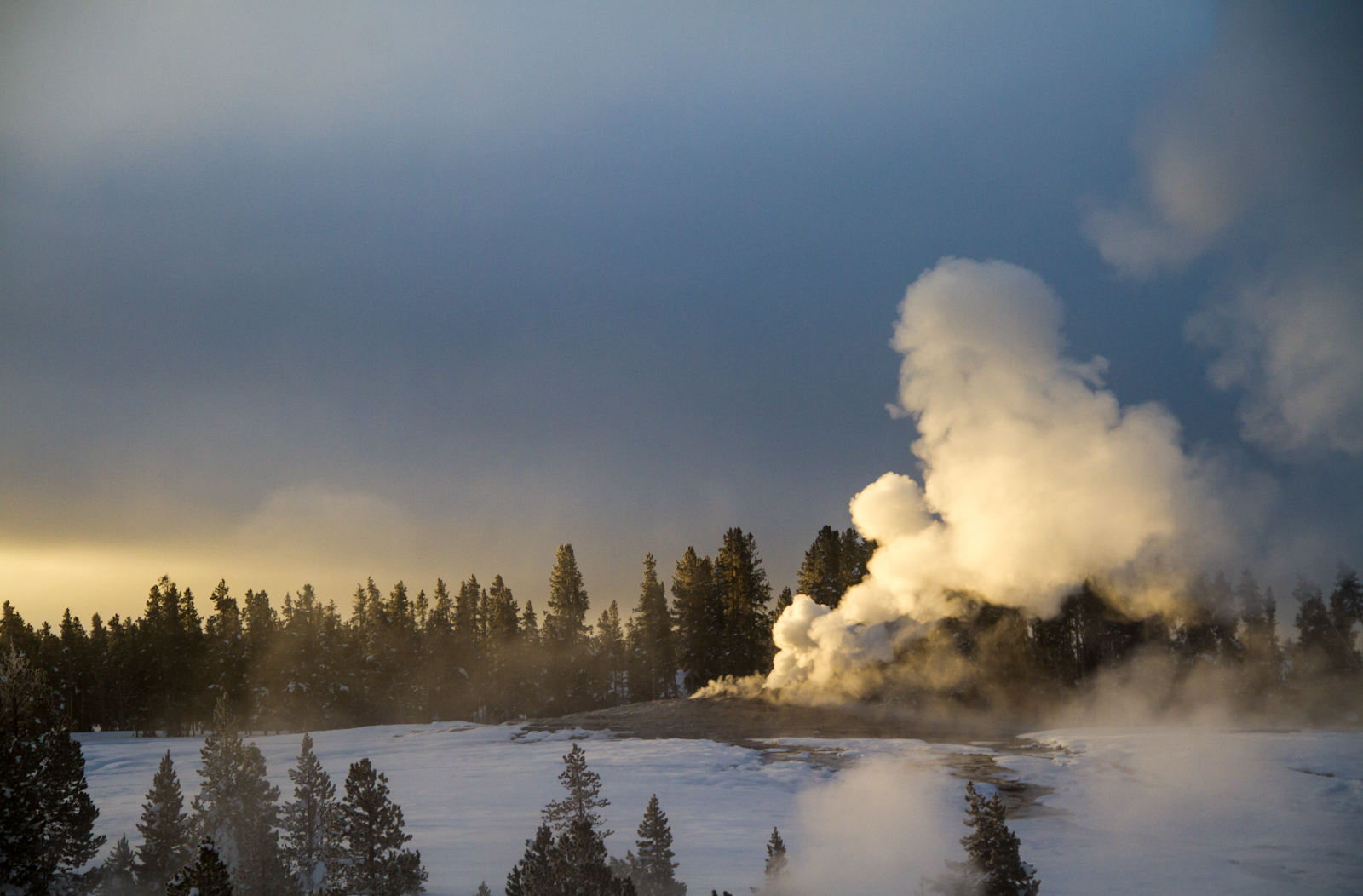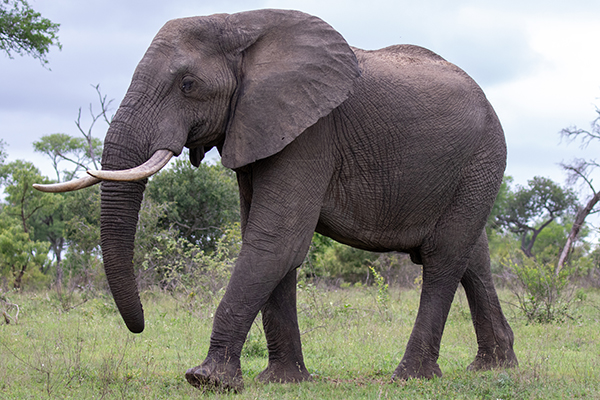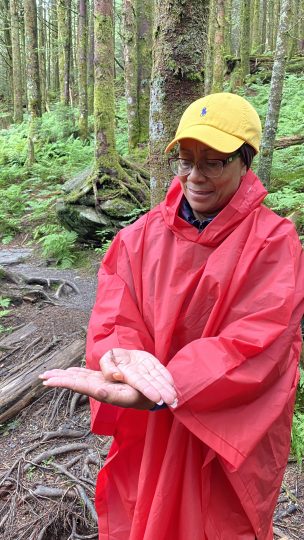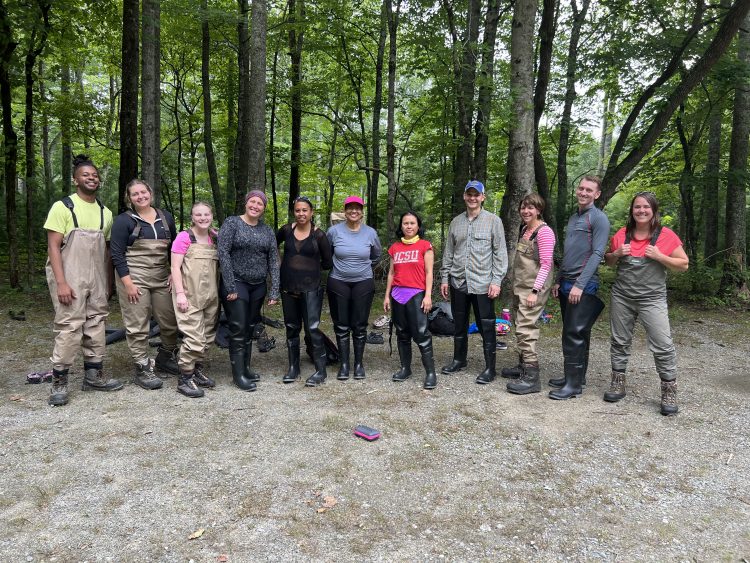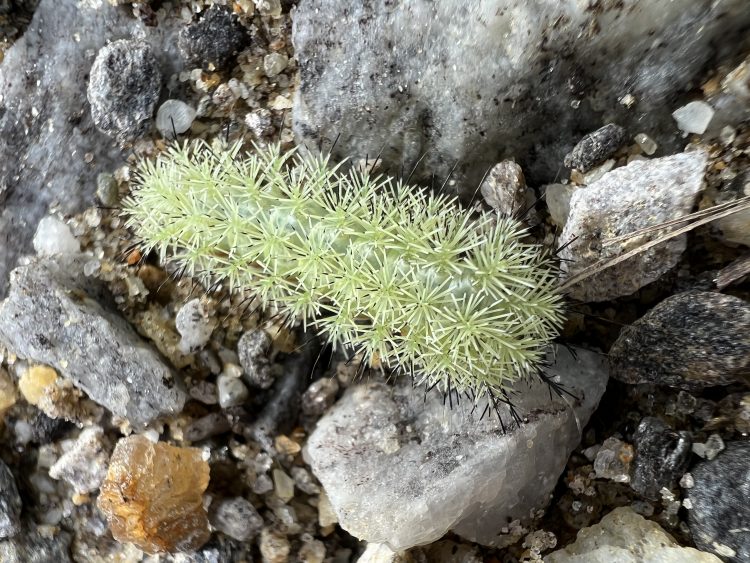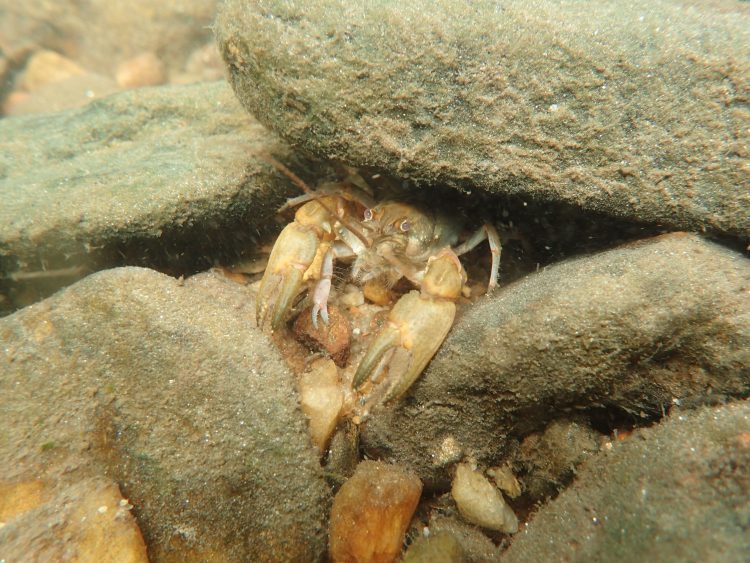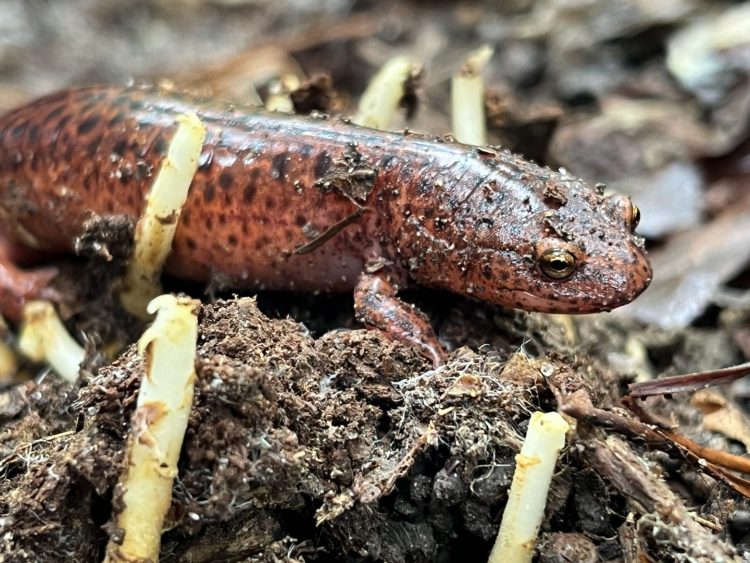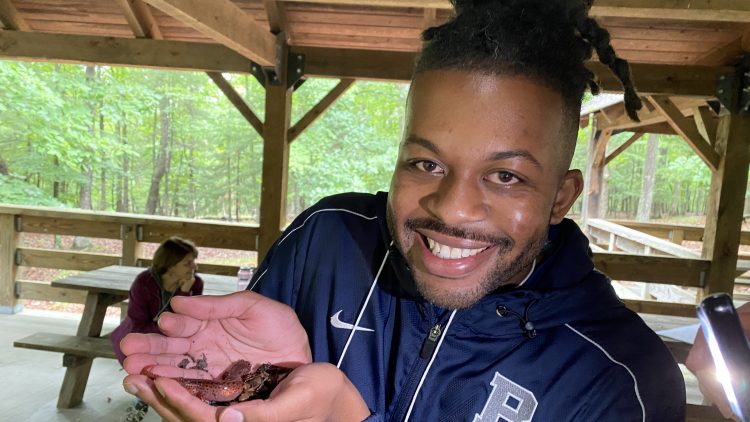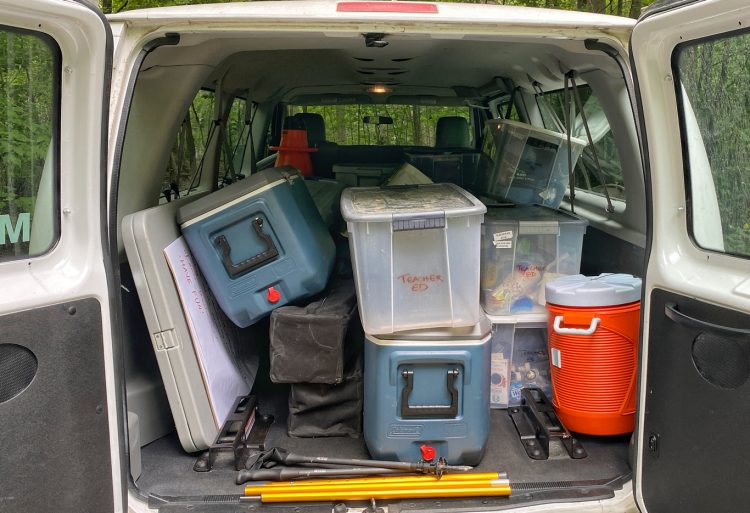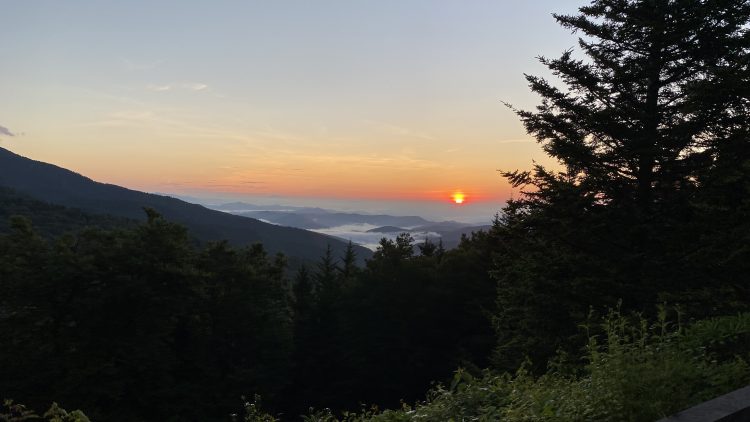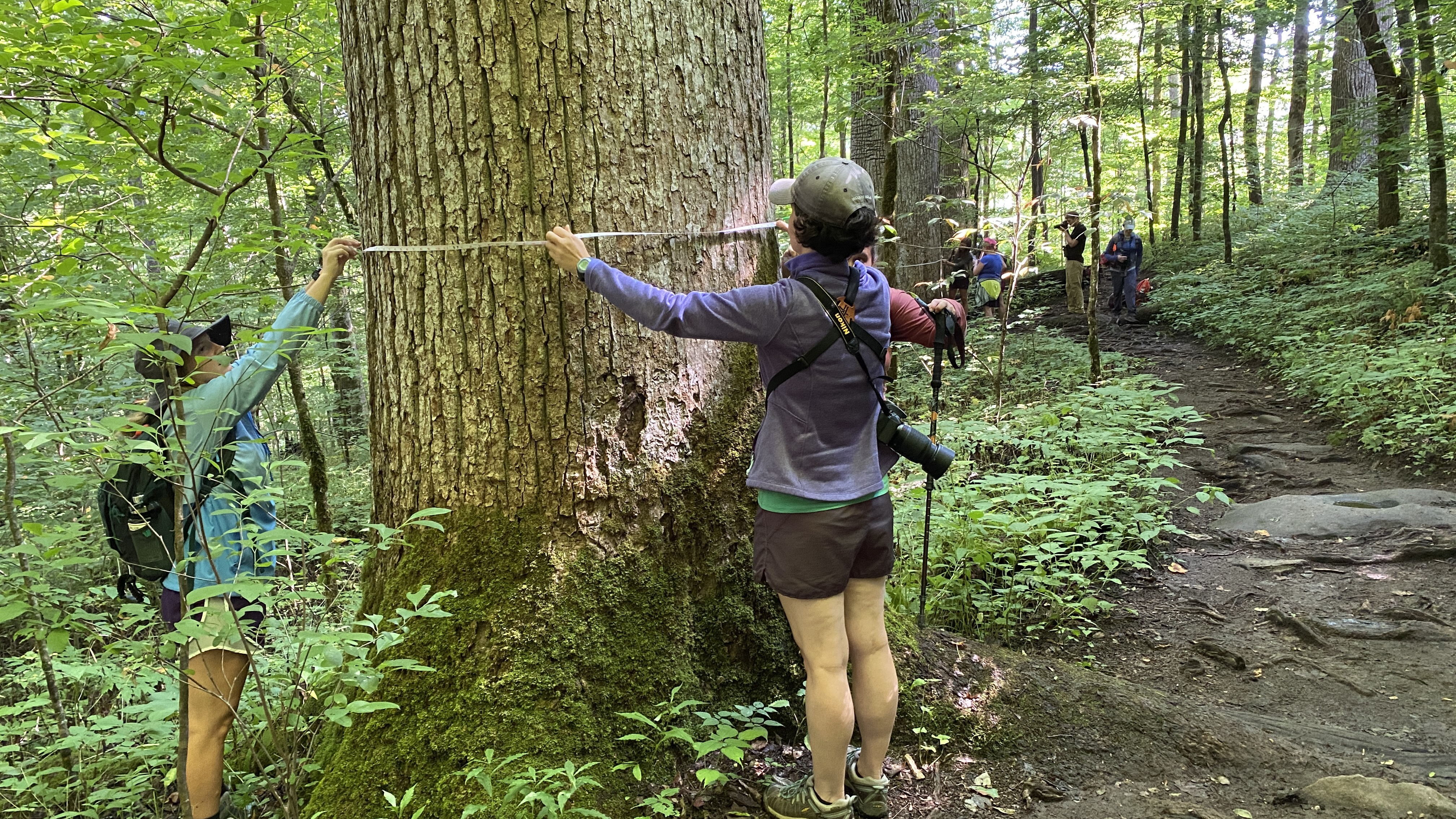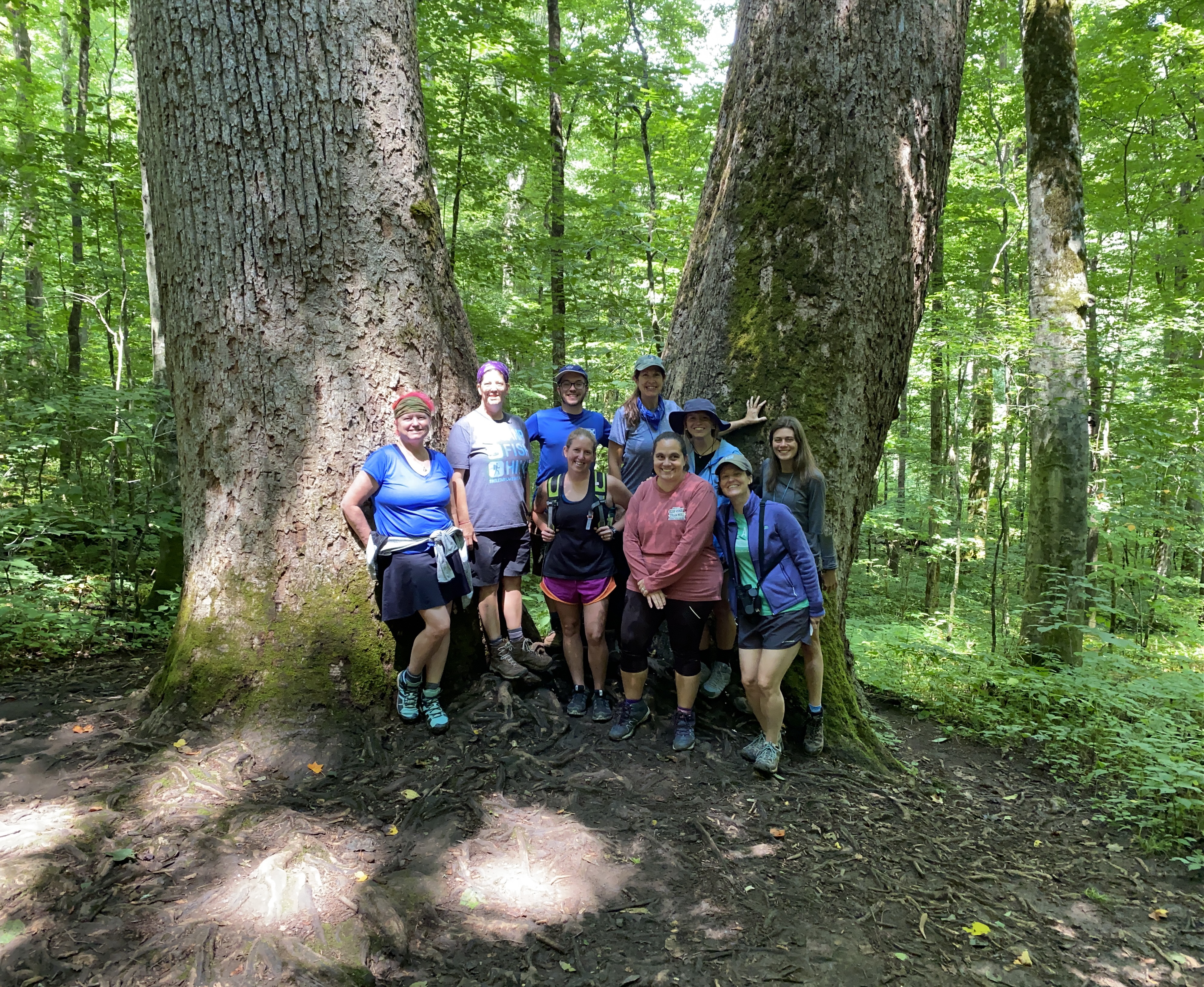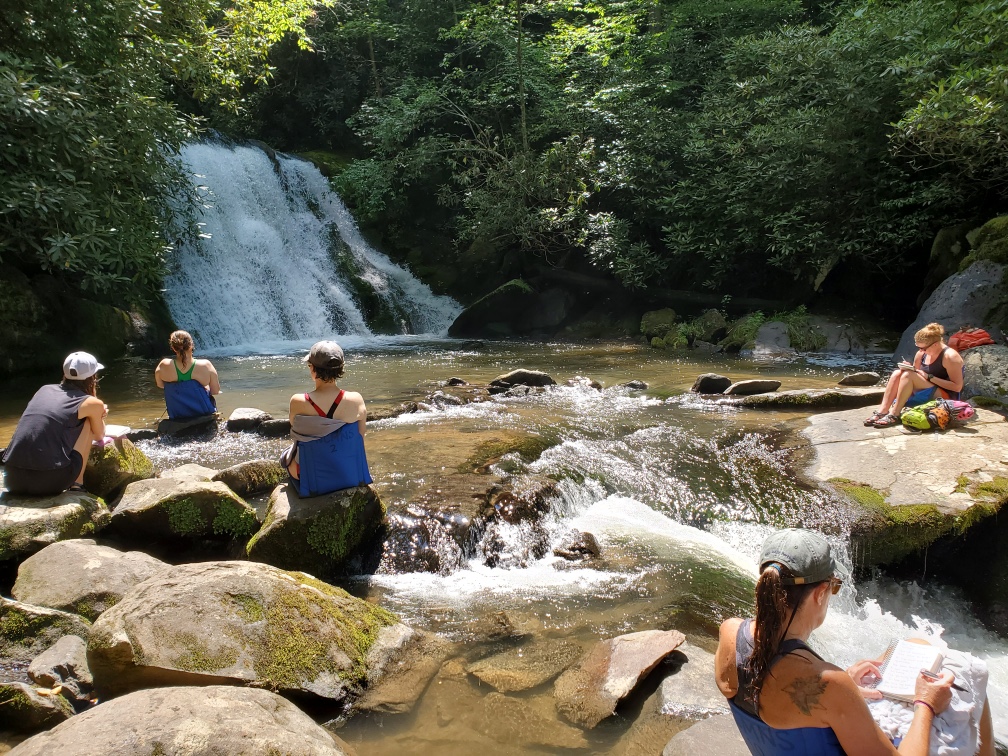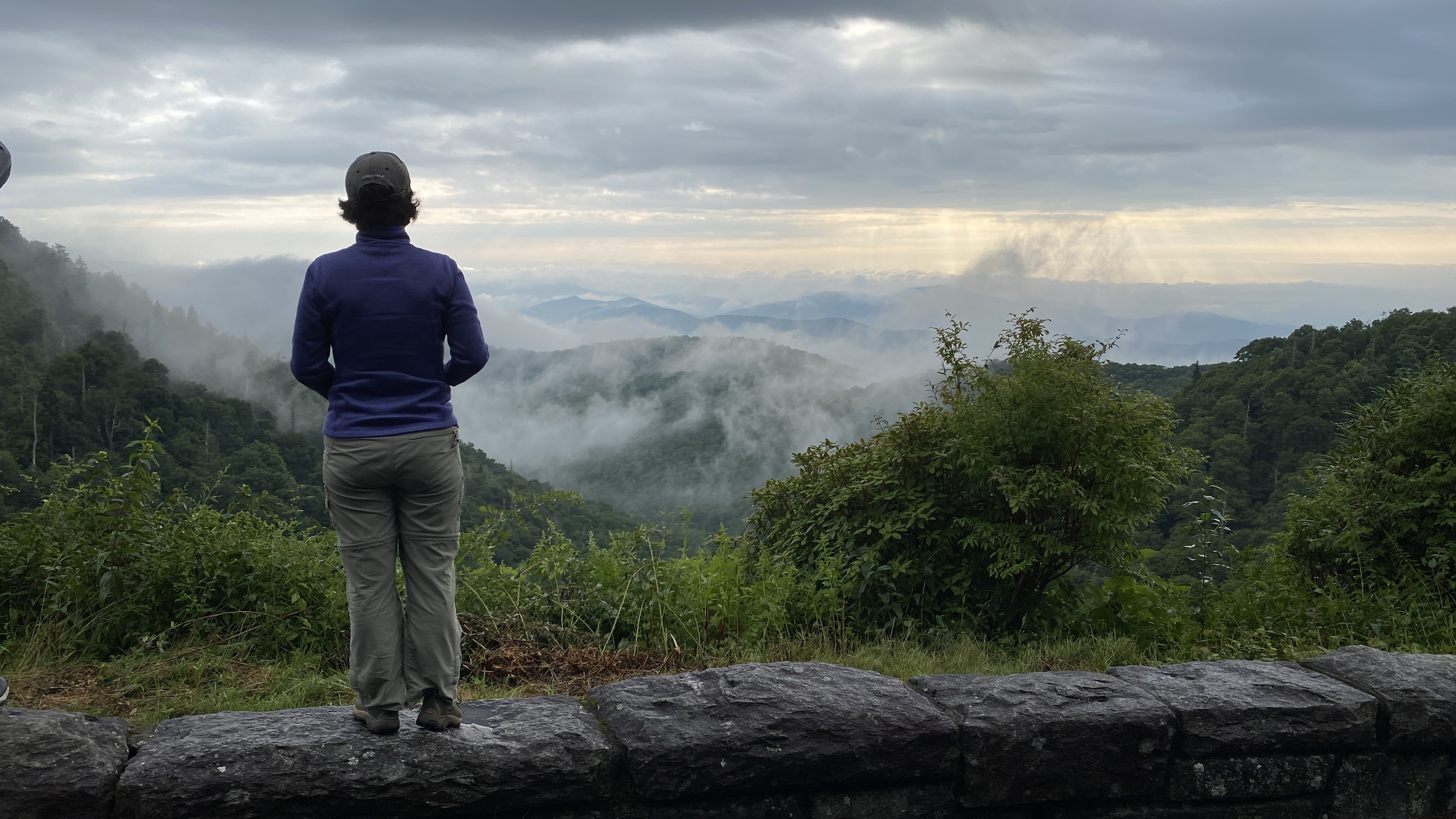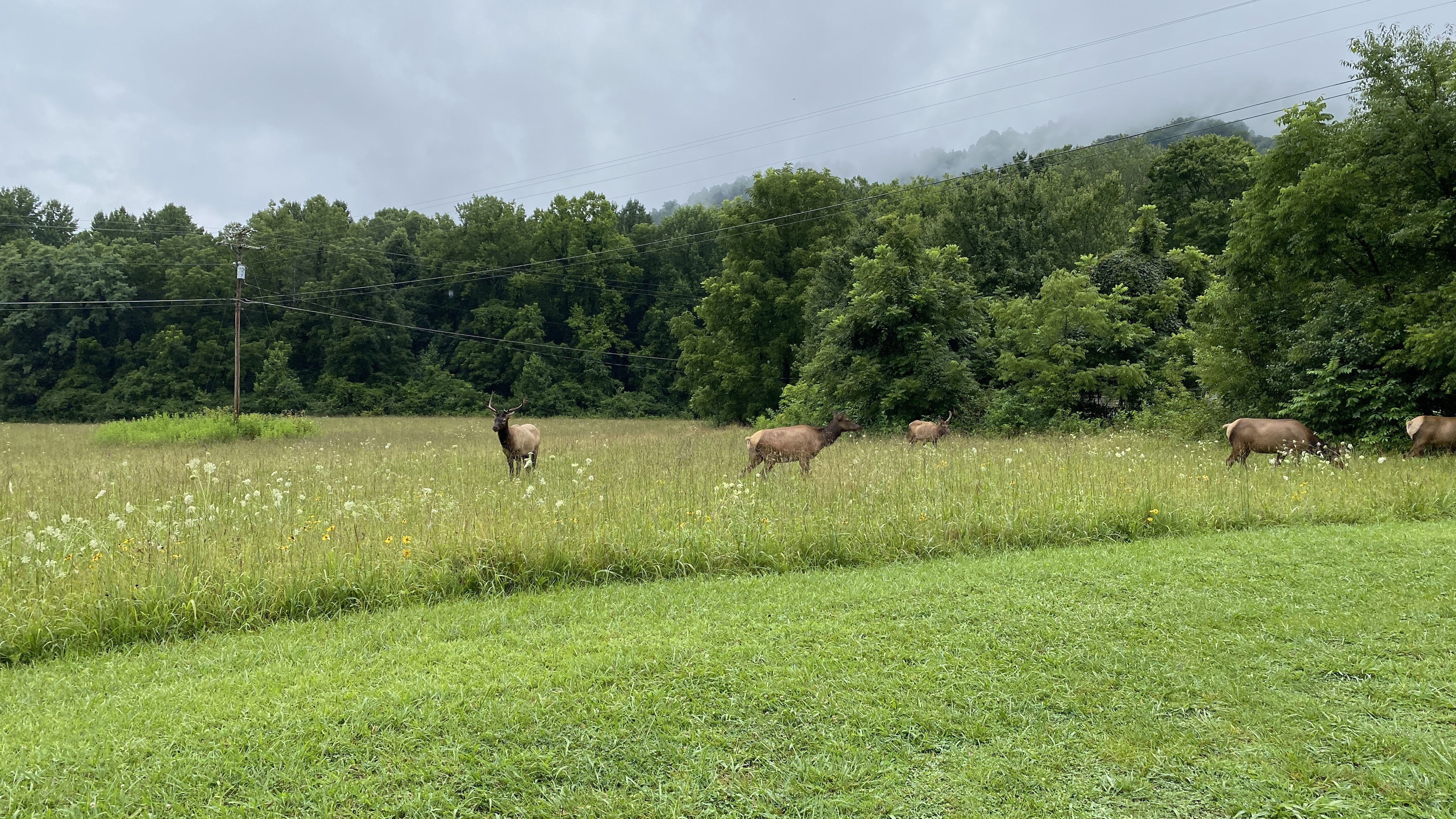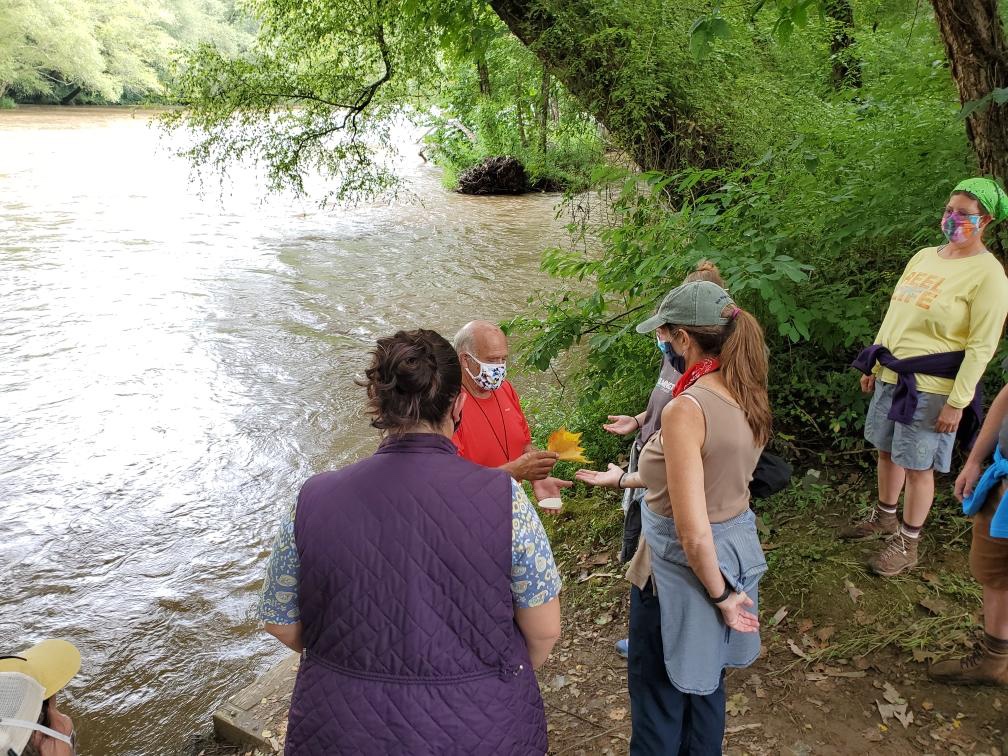“High in the Sky”
July 14, 2022 - 1 Comment
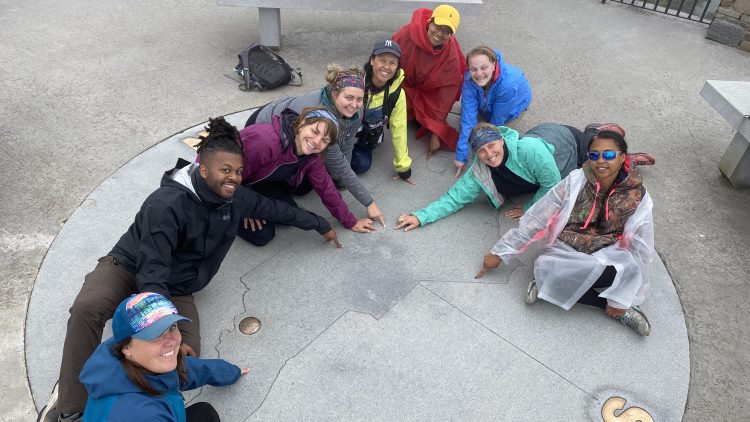
Where are we from? On top of Mt. Mitchell at 6,684 feet, our teachers showed off their home locations on the map at the summit.
In the meadow of sleepy teachers in tents, the sounds of alarms buzzed through the mountains at 4:00am. We stumbled to the pavilion to get a hot cup of Joe and piled into the vans to get ready to band some birds! Driving through the winding roads of the Blue Ridge Parkway we stopped at Ridge Junction Overlook to take a gander. After taking in the beautiful vistas the teachers all crawled back in the van, trying to make sure we were not late for the birds. Surprise! We all crawled back out to appreciate the simple moments of a sunrise. As the sun rose above the horizon it cast a beautiful fiery orange red glow that crowned the Black Mountains.
Next, we drove a short while to the Big Butt trailhead and donned our gear to go capture the birds of the Appalachians with John, the ornithologist from the NCMNS. With high anticipation, we waited on the edge of our Crazy Creek chairs to capture our first bird to band. In the quiet of waiting, a Golden-crowned Kinglet flew into our net. Once freed from the net John showed the group how to measure and weigh the tiny bird. John placed a silver bracelet with multiple numbers on it to help identify the bird in future captures for collecting data. Finally, we released the kinglet and learned about the NC Audubon Society. Amy shared all the work they complete to conserve our native birds. She is a conservation biologist and she had a lot of information to share about private land owners and helping protect many different birds.
Surprise! Our view of Mount Mitchell was obscured by approaching storm clouds. The cloudy and windy summit is the highest point east of the Mississippi. With less-than-ideal views of the Black Mountains, we headed into the spruce-fir forest. The awe and wonder of the misty, dark forest was heightened when one of the teachers led us through a mindfulness exercise focusing on the Fraser Fir tree. Throughout our hike, we were enlightened by so many facts about species including the tiny Spruce-fir Moss Spider that is endangered, the similarly diminutive Pygmy Salamanders, and the giants of the forest, Red Spruce and Fraser Fir.
We were all prepared for the incoming storm … Surprise! The weather held out and made for one more final, beautiful view from Mount Mitchell summit. We had an eventful day of soaking up all of the information shared with us as we continued our explorations through the Blue Ridge Mountains.

